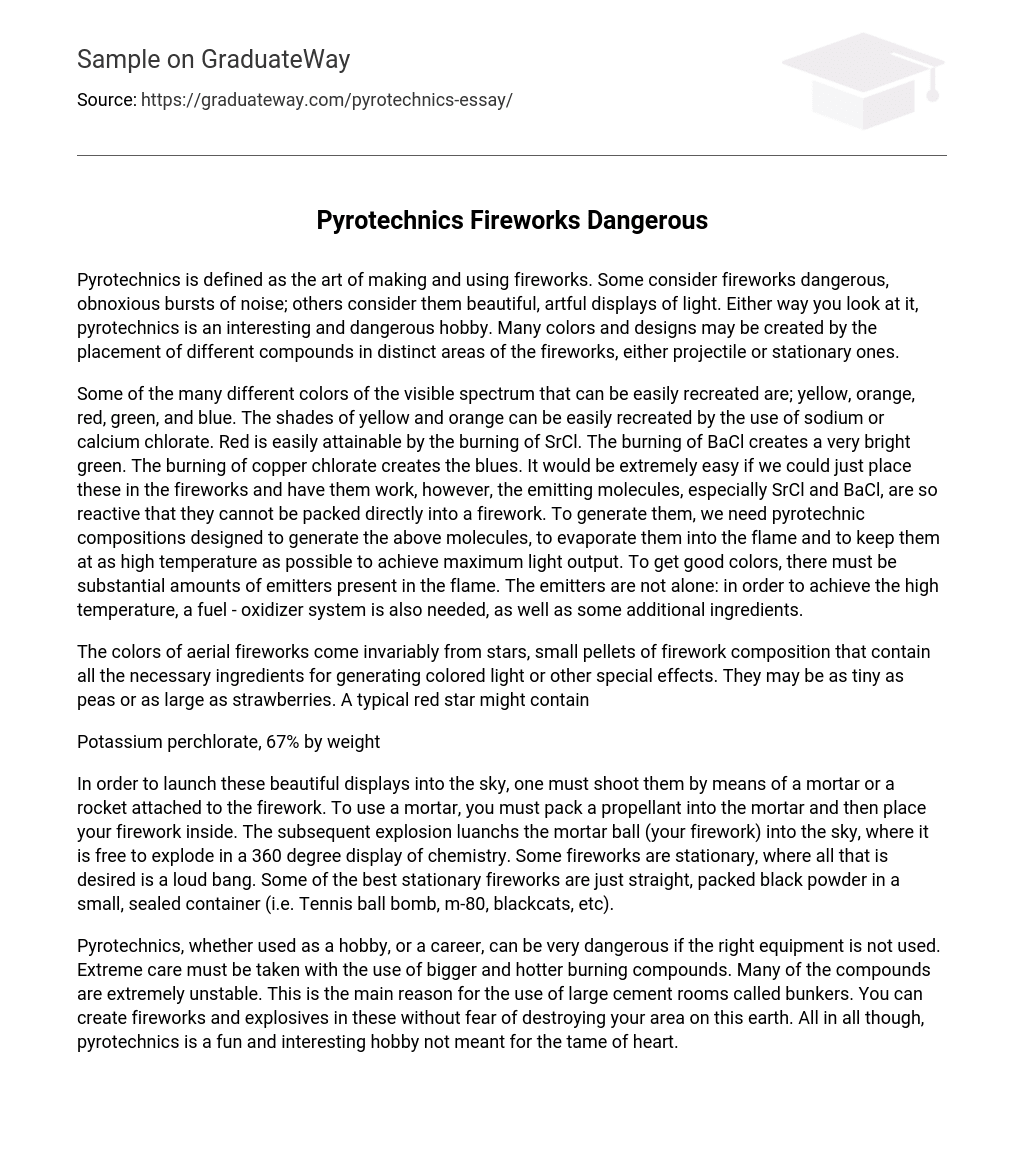Pyrotechnics, the art of producing and utilizing fireworks, can be perceived in different ways. While some view them as hazardous and noisy, others appreciate their enchanting and artistic illumination. Regardless of one’s perspective, pyrotechnics remains a captivating and perilous pastime. By strategically arranging various compounds within different sections of fireworks, whether they are mobile or stationary, a wide assortment of colors and patterns can be achieved.
Some of the many different colors of the visible spectrum that can be easily recreated include yellow, orange, red, green, and blue. Sodium or calcium chlorate can be used to quickly recreate shades of yellow and orange. Red can be easily achieved by burning SrCl, while the burning of BaCl produces a very bright green. The blues can be created by burning copper chlorate. However, it is not as simple as placing these substances into fireworks and having them work. The emitting molecules, especially SrCl and BaCl, are too reactive to be directly packed into fireworks. To generate these molecules, pyrotechnic compositions must be designed to evaporate them into the flame and keep them at a high temperature to maximize light output. To achieve good colors, a substantial amount of emitters must be present in the flame. Additionally, a fuel-oxidizer system and other ingredients are required to reach the necessary high temperature.
The colors of aerial fireworks are always derived from stars. These stars are small pellets of firework composition that include all the necessary elements for creating colored light or other special effects. These stars can vary in size, ranging from as small as peas to as large as strawberries. A red star, for example, typically contains…
Potassium perchlorate, with a weight composition of 67%,
To launch these beautiful displays into the sky, one must shoot them using a mortar or a rocket attached to the firework. To use a mortar, you have to pack a propellant into it and then place the firework inside. The subsequent explosion launches the mortar ball (the firework) into the sky, where it can explode in a 360-degree display of chemistry. Some fireworks are stationary and only produce a loud bang. The best stationary fireworks are usually straight, packed with black powder and enclosed in a small container (such as Tennis ball bomb, m-80, blackcats, etc.).
Regardless of whether pyrotechnics is pursued as a hobby or a profession, it can be highly unsafe if proper equipment is not utilized. Great caution is necessary when working with larger and more intense burning compounds, as many of these substances are highly volatile. This is why bunkers, large cement rooms, are utilized to safely create fireworks and explosives without risking destruction of the surrounding area. Despite its potential dangers, pyrotechnics remains an engaging and captivating hobby that is not suited for the faint-hearted.





